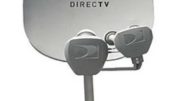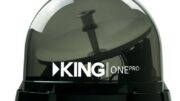Japanese television network NHK is always on the forefront of technology. The company started HDTV broadcasts in the 1980s — you read that right — and has been doing 4K for longer than anyone else. They’ve just recently announced that they are doing limited testing of 8K video broadcast over satellite. They intend to make the Rio Olympics a testbed for their own coverage of the 2020 Olympics in Japan.
Japan Times reports that even though there isn’t any consumer TV that can pick up 8K broadcasts, there will a few devices set up for public viewings of 8K broadcasts. It’s not likely that you will be anywhere near one, so don’t even worry about that.
8K, which has a resolution four times that of 4K and 16 times that of HD, really only makes any sense if you’re looking at an 85″ or larger picture, and I’m guessing it doesn’t do a whole lot for you unless you’re at 120″ or larger. For now that kind of TV is a bit of a pipe dream for most people but never say never… it wasn’t long ago that large 4K TVs were over $20,000 and today you can pick one up for under $2,000.
You may say that you don’t need 8K, and you’re probably right… the way we watch TV today doesn’t imply any sort of need for 8K. If you begin to think of a video display literally built into a wall, the size of a window, it does begin to make sense. Such a display seems like science fiction now and it’s hard to imagine really needing it, but times do change. It’s also important to remember that 8K display may not ever be important, but 8K capture certainly will be. 8K cameras could capture a huge area of the field at sporting events, giving both referees and fans an HD view of almost anything. At roughly 64 times the resolution of “standard definition” (a term which seems less and less relevant every day) the amount of coverage from a single camera would be nothing less than amazing.
Sports isn’t the only place that 8K could have a benefit. 8K security cameras could revolutionize the way we take care of our private spaces, and when really unfortunate events do happen, imagine how much more information could be gleaned from a series of videos shot on 8K phones. There exists only one known moving picture of the assassination of President John F. Kennedy, and it’s at a resolution roughly half of standard definition TV. Today’s events are captured by spectators in HD, but even that pales in comparison to the amount of useful data that could be captured by spectators in 8K.
It’s far too early for most of us to really think about 8K. NHK will be ready for the 2020 Olympics, but it’s not likely that we’ll see commercially available 8K TVs for four or five years after that. If they do come here to the US they’ll be ridiculously expensive, and as with the early days of HD (and the way things stand today with 4K) there won’t be much in the way of content for a long time to come.
So, NHK’s announcement is great, and it’s something that your kids or grandkids will write about in school, but it’s certainly no reason to put off buying a new TV or getting any other upgrades to your system.





